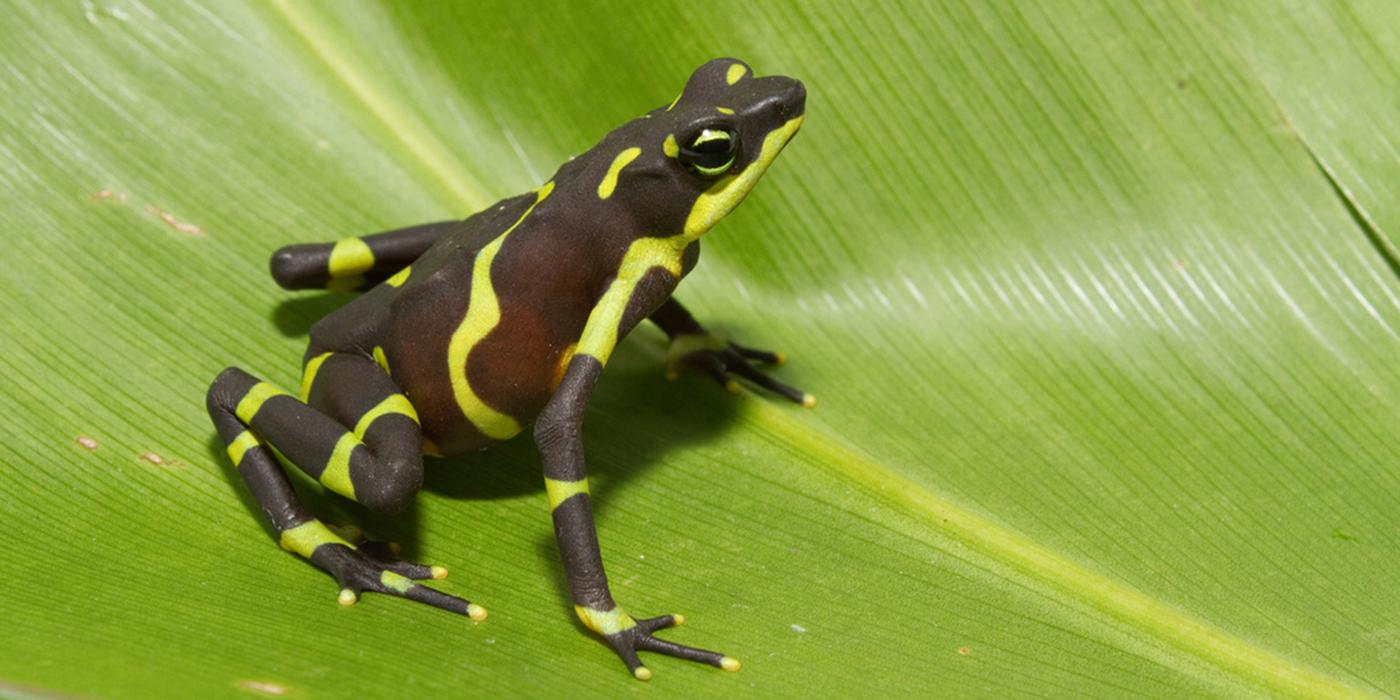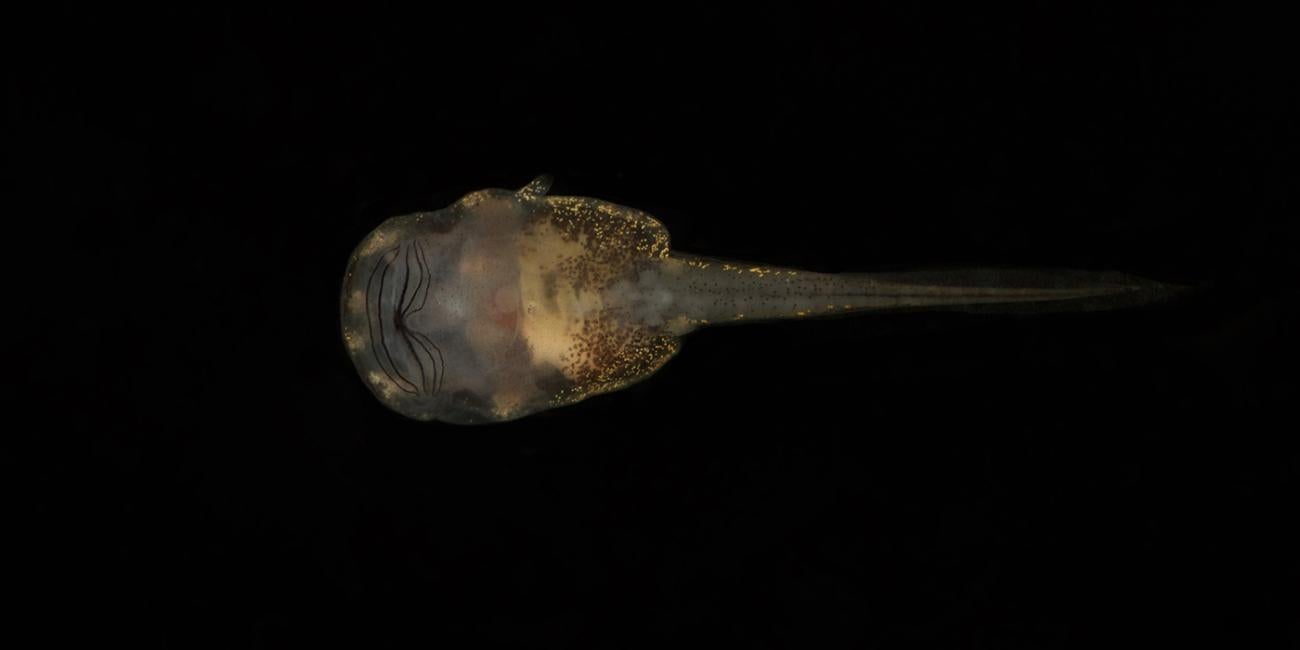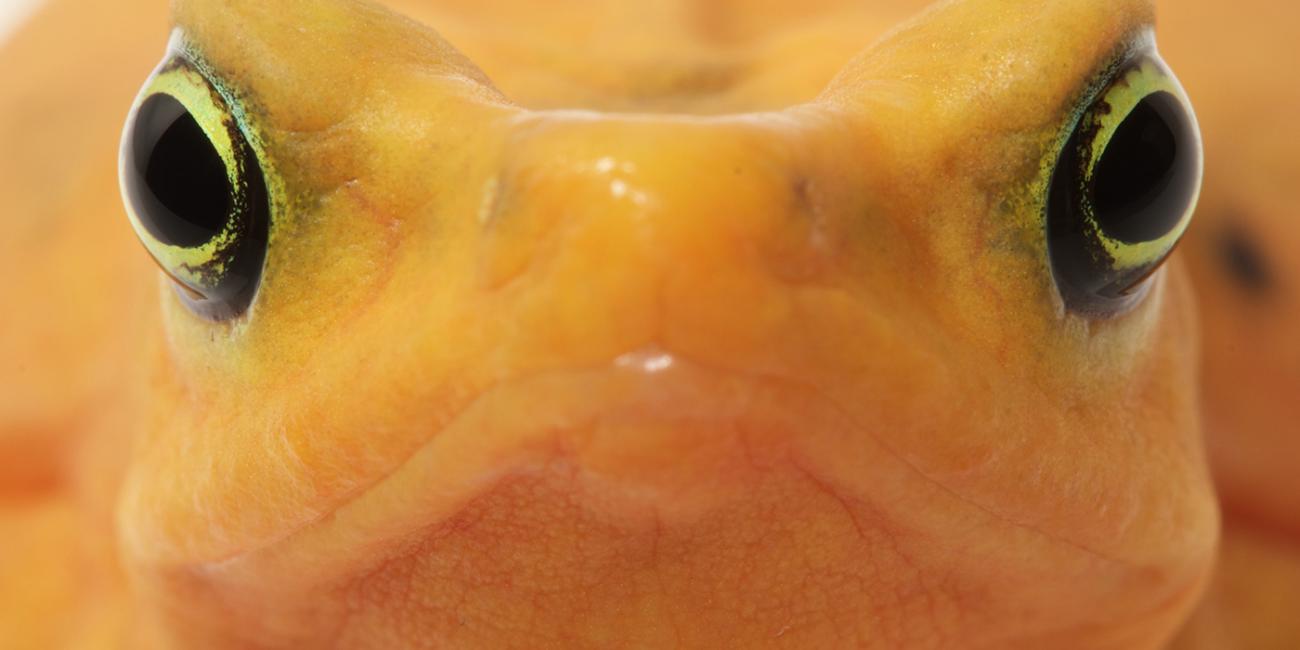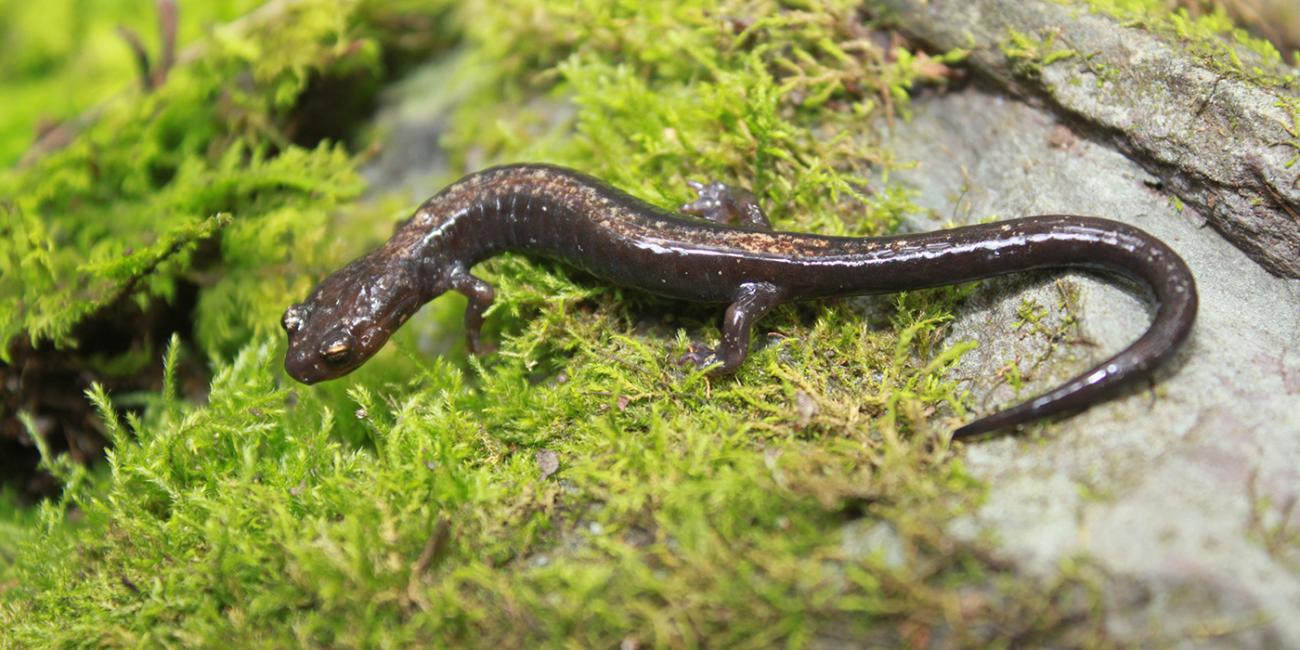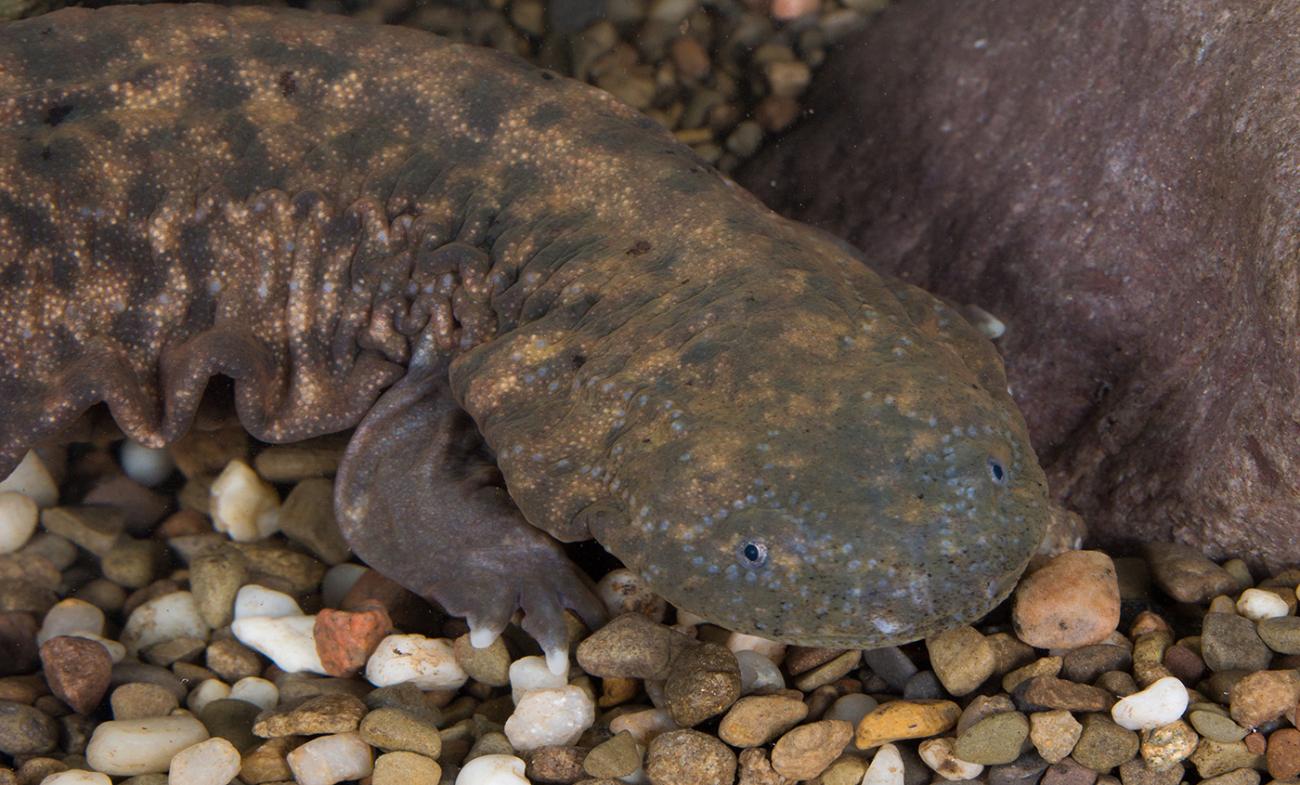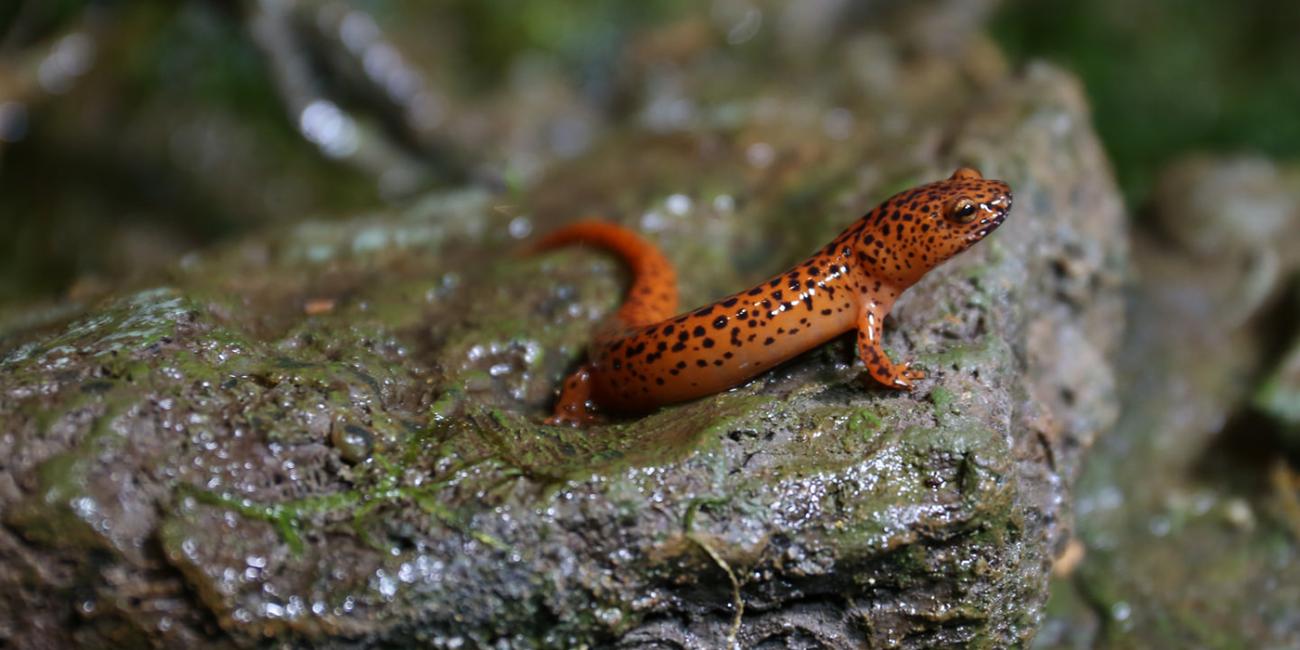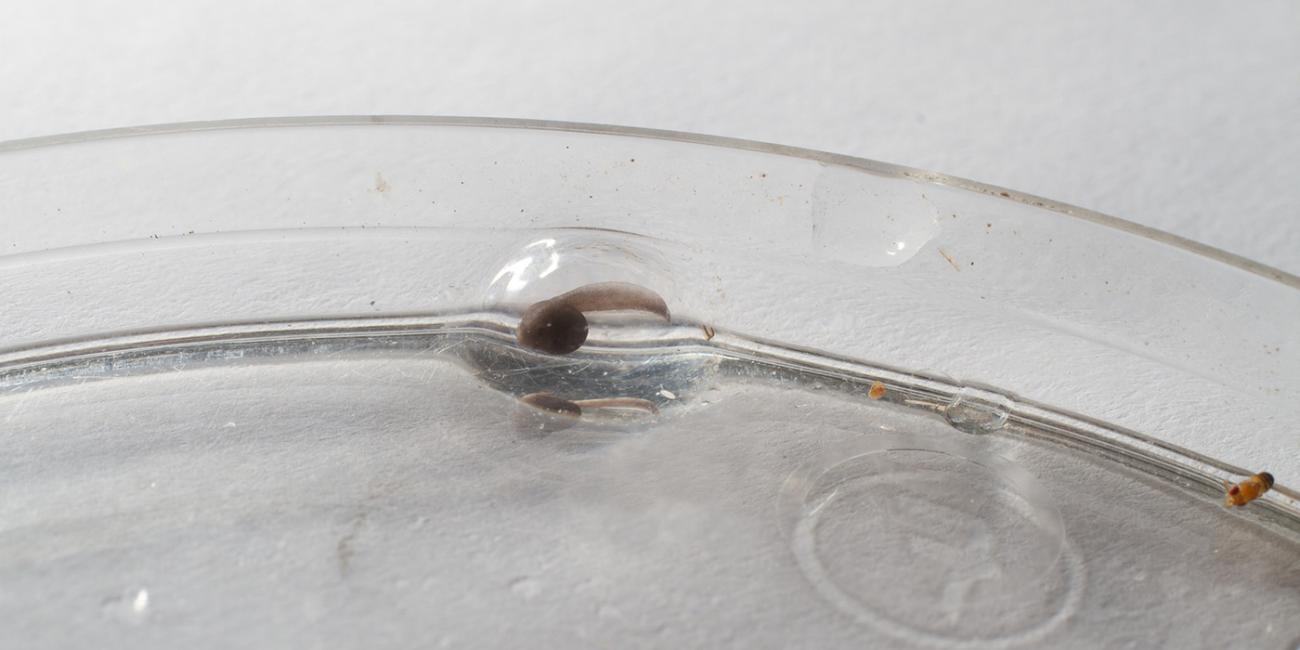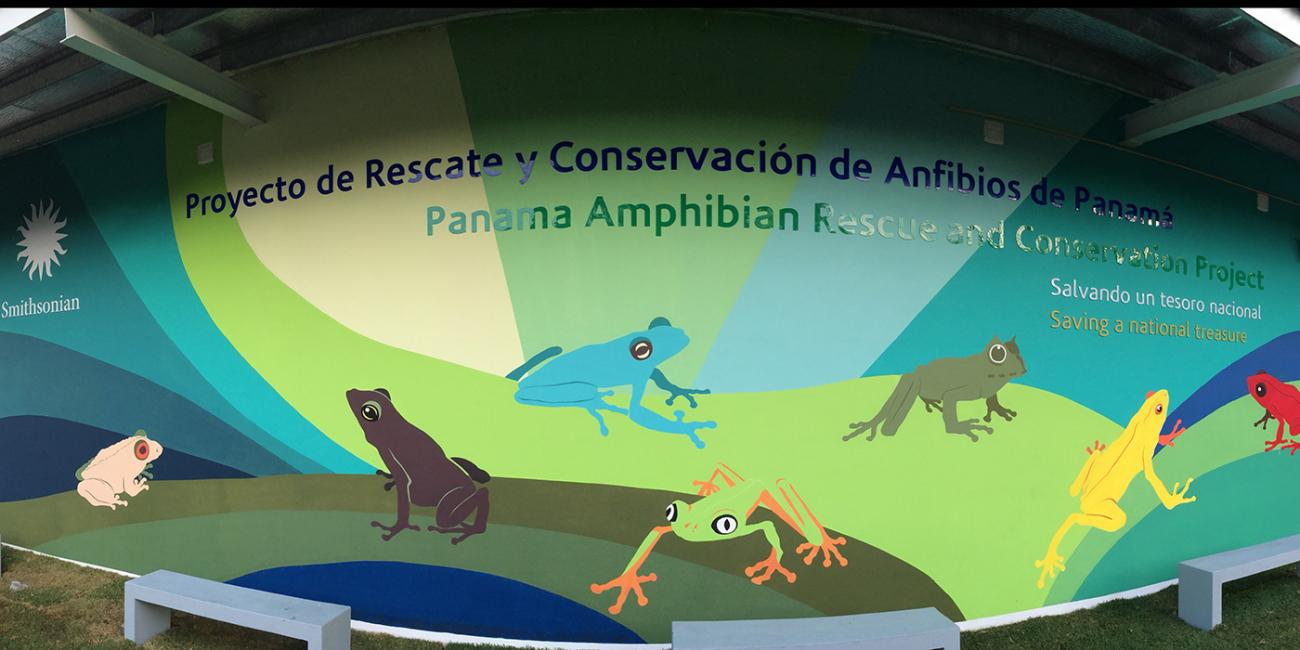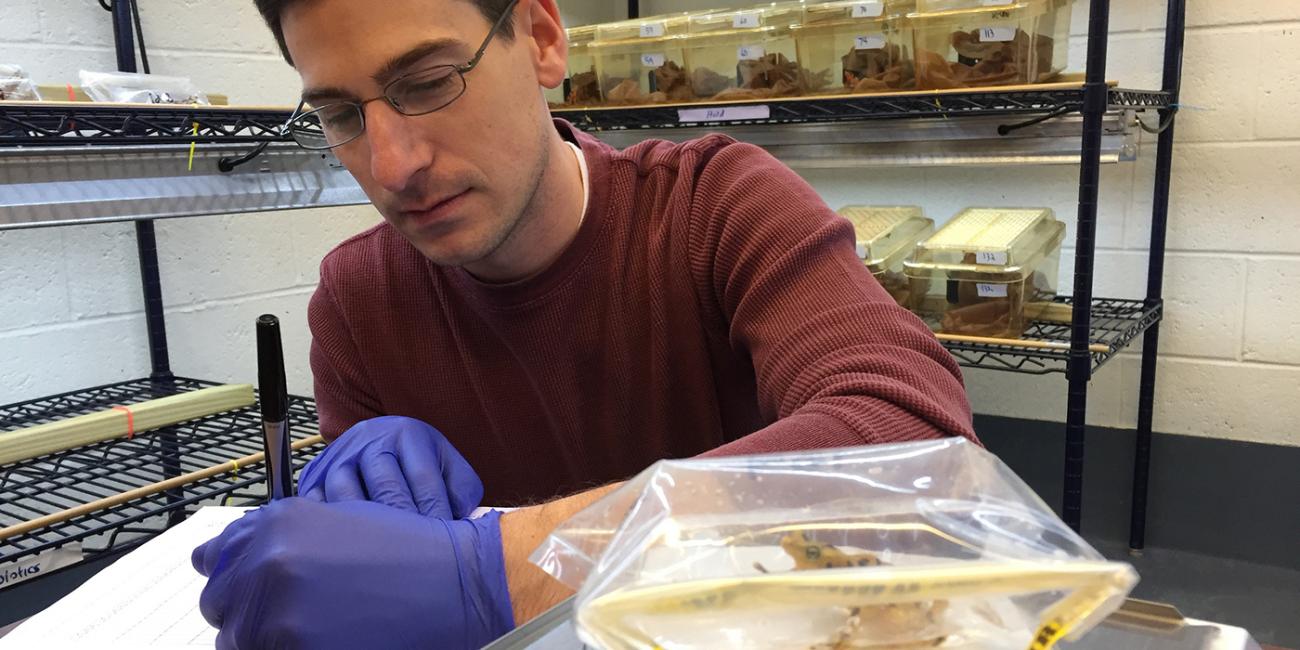Amphibians
Amphibians—frogs, toads, salamanders and newts—are vanishing. Researchers believe that since 1980, 122 amphibian species have gone extinct. Furthermore, 42 percent of the world's 7,500 frog, salamander and caecilian species are declining rapidly and are in danger of extinction in our lifetimes. This is an unprecedented rate of species decline and loss and deserves an unprecedented conservation response. Amphibian conservation is part of the Smithsonian Conservation and Biology Institute’s Center for Species Survival. Activities are primarily focused in Panama--through the Smithsonian Tropical Research Institute--and in Appalachia with support of the Smithsonian Conservation Biology Institute.
Endangered Frogs
In 1999, Smithsonian’s National Zoo scientists worked with a researcher from the University of Maine to describe a new fungus that causes the skin disease chytridiomycosis--or Batrachochytrium dendrobatidis (Bd)--that is deadly to amphibians. Scientists now believe that the spread of this disease, simply referred to as chytrid, is responsible for mass amphibian extinctions on several continents. The Center for Species Survival’s conservation efforts focus on developing ex situ assurance colonies for amphibian species at highest risk for extinction and finding a cure for the amphibian chytrid fungus so that amphibians can be reintroduced to their native habitat.
Appalachian Salamanders
The Appalachian region is home to more salamander species than anywhere else in the world, making it a true hotspot for salamander biodiversity. With almost half of all salamander species listed as threatened or endangered and populations continuing to decline, the Appalachian region has become a primary focus of salamander conservation research and planning. The Center for Species Survival’s conservation efforts focus on understanding the threat of climate change to Appalachian salamanders and the threat of emerging diseases, and on monitoring salamanders.
Help Save Frogs and Salamanders!
- Participate in the Global Amphibian Bioblitz
- Visit the Zoo's amphibian conservation exhibits at Amazonia and Reptile Discovery Center
